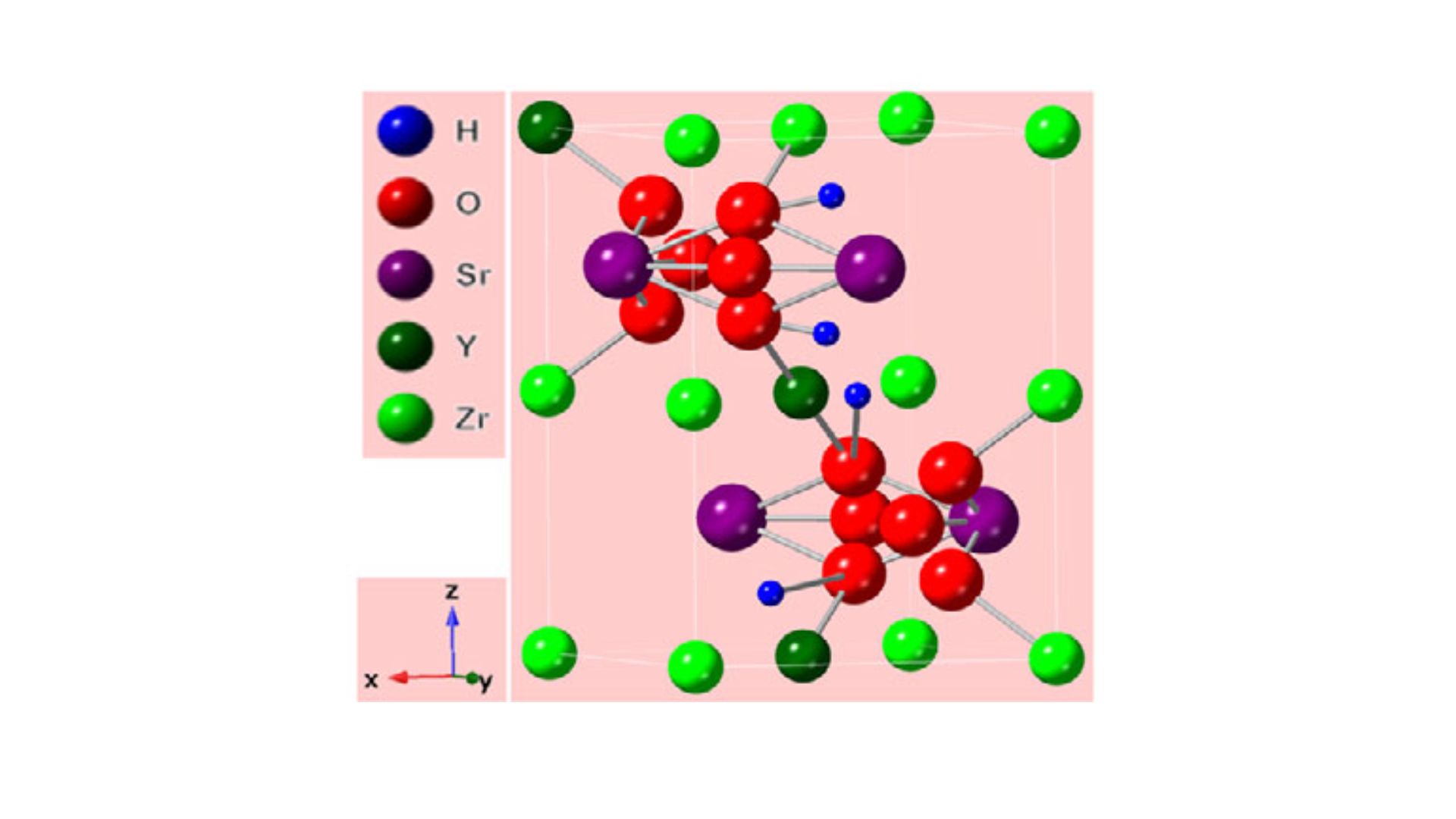Fuel cells are incredibly useful devices for transferring chemical energy from molecules such as hydrogen and ammonia into electrical energy. Current low temperature fuel cells are based on a polymer electrolyte membrane, although solid oxide fuel cells (SOFCs) have the potential to be a cheaper and more stable alternative. A drawback of SOFCs is that they require high temperatures to efficiently operate. To reduce their operating temperature and make them more usable in a wider range of applications, it's crucial to find materials to use as the electrolyte that are good H+ / O2- / OH− ion conductors.
In this study, published in Nature Communications, the researchers investigated the ceramic materials SrZr0.8Y0.2O3-δ (SZYO20) and CaZr0.8Y0.2O3-δ(CZY20). They found that they showed high ionic conductivity at low temperatures when exposed to water or humidified air, opening up this method as a way to develop SOFCs that operate close to ambient temperatures.
For a material to be a good ionic conductor, there needs to be pathways through the structure for the ions to diffuse. The researchers used multiple methods to investigate the structure of SZYO20 to determine how the OH- and hydrogen ions were moving inside, including X-ray diffraction, NMR, Raman spectroscopy and neutron diffraction.
They collected neutron diffraction data on their samples on the HRPD beamline at ISIS. Neutron diffraction was used as X-rays lack the sensitivity to accurately determine proton positions and oxygen occupancy of the water-hydrated sample. The team deuterated their sample and then were able to determine the exact structure of SZYO20 as SrZr0.86Y0.14O2.86(OD)0.14 and determine where the ions sit within it.
They found that in the un-hydrated sample there are oxygen vacancies present, and, after full hydration, they saw the presence of hydrogen and additional oxygen atoms in the bulk of the sample. This suggests that a combination of proton transfer and OH− migration within the lattice could be taking place, resulting in the observed high conductivity.
After determining the structure, they tested the material in an ammonia fuel cell, proving that their method of hydrating the electrolyte can be used in practical devices. Having a hydrated electrolyte in the fuel cell makes these materials most suitable for applications with a liquid fuel, such as an ammonia solution, or for use in electrolysers for water splitting.
This discovery that hydration enables low temperature conductivity in these types of ceramics opens up a whole new window of opportunity to discovering further materials that could enable low temperature SOFCs to become a reality.

The schematic diagram for OH−/H+ ion diffusion in SrZr1-xYxO3-δ.
The full paper can be found at DOI: 10.1038/s41467-024-45060-1
